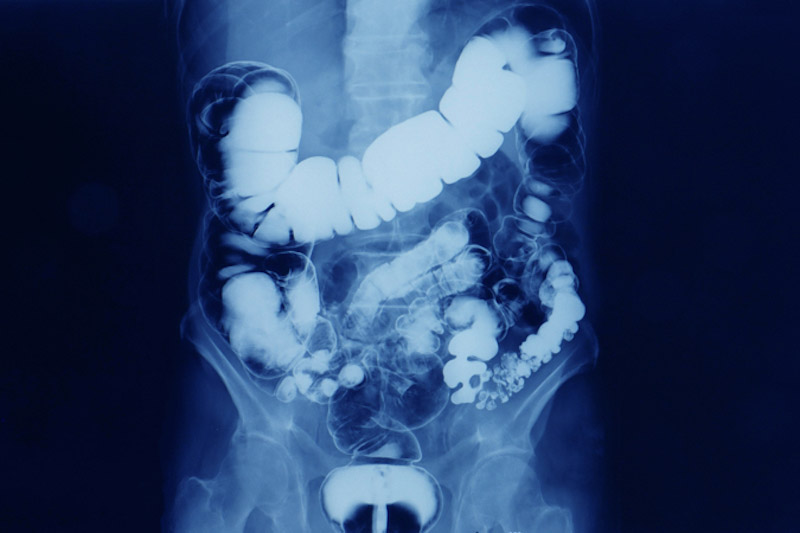
What is a double contrast barium enema?
The double-contrast barium enema is an x-ray of the colon and rectum which is performed first by using a suspension of water and barium introduced rectally and then by air which makes it possible to make the structure of the organ visible on x-rays. is entered, i.e. the colon in its entirety
How does the double contrast barium enema work?
The doctor or nurse inserts the tube, up to 10 centimeters, into the patient’s rectum.
By means of a bag connected to the probe, the contrast liquid is then gradually introduced and then the air, useful for allowing a better distribution of the contrast medium.
During the examination, the patient is asked several times to change position (on one side, on the other) to allow the contrast medium to opacify the entire colon so that the doctor can evaluate the best.
Images of the intestine are taken thanks to x-rays and are then transmitted to the reporting monitor.
What is the double contrast barium enema used for?
It is usually carried out when an alteration in the rectum or colon is suspected, or in case of irregular bowel function (sudden onset of constipation, also alternating with diarrhoea).
Double-contrast barium enema is used to look for neoplasms and diverticula (small outpouchings in the intestinal wall).
Which patients can undergo the test?
Double-contrast enema cannot be done if there is intestinal perforation or if peritonitis (inflammation of the peritoneum, which is the membrane that surrounds the intestine) is suspected.
It is an examination that is not performed during pregnancy as x-rays can cause damage to the fetus.
Is it painful or dangerous?
It’s not a dangerous test, but it can be annoying.
The insertion of the probe, the contrast liquid and the air frequently causes abdominal pain, sometimes even severe.
Read Also
Emergency Live Even More…Live: Download The New Free App Of Your Newspaper For IOS And Android
Colonoscopy: What It Is, When To Do It, Preparation And Risks
Colon Wash: What It Is, What It Is For And When It Needs To Be Done
Rectosigmoidoscopy And Colonoscopy: What They Are And When They Are Performed
Ulcerative Colitis: What Are The Typical Symptoms Of The Intestinal Disease?
Wales’ Bowel Surgery Death Rate ‘Higher Than Expected’
Irritable Bowel Syndrome (IBS): A Benign Condition To Keep Under Control
Intestinal Infections: How Is Dientamoeba Fragilis Infection Contracted?
Study Finds Link Between Colon Cancer And Antibiotic Use
Colonoscopy: More Effective And Sustainable With Artificial Intelligence
Colorectal Resection: In Which Cases The Removal Of A Colon Tract Is Necessary
Gastroscopy: What The Examination Is For And How It Is Performed
Gastro-Oesophageal Reflux: Symptoms, Diagnosis And Treatment
Endoscopic Polypectomy: What It Is, When It Is Performed
Straight Leg Raise: The New Manoeuvre To Diagnose Gastro-Oesophageal Reflux Disease
Gastroenterology: Endoscopic Treatment For Gastro-Oesophageal Reflux
Oesophagitis: Symptoms, Diagnosis And Treatment
Gastro-Oesophageal Reflux: Causes And Remedies
Gastroscopy: What It Is And What It Is For
Colonic Diverticular Disease: Diagnosis And Treatment Of Colonic Diverticulosis
Gastro-Oesophageal Reflux Disease (GERD): Symptoms, Diagnosis And Treatment
Diverticula: What Are The Symptoms Of Diverticulitis And How To Treat It
Irritable Bowel Syndrome (IBS): A Benign Condition To Keep Under Control
Gastroesophageal Reflux: Causes, Symptoms, Tests For Diagnosis And Treatment
Non-Hodgkin’s Lymphoma: Symptoms, Diagnosis And Treatment Of A Heterogeneous Group Of Tumours
Helicobacter Pylori: How To Recognise And Treat It
A Baby’s Gut Bacteria May Predict Future Obesity
Sant’Orsola In Bologna (Italy) Opens A New Medical Frontier With Microbiota Transplantation
Microbiota, The Role Of The ‘Gate’ That Protects The Brain From Intestinal Inflammation Discovered
What Are The Differences Between Diverticulitis And Diverticulosis?
When Is A Colonoscopy With Biopsy Necessary?


